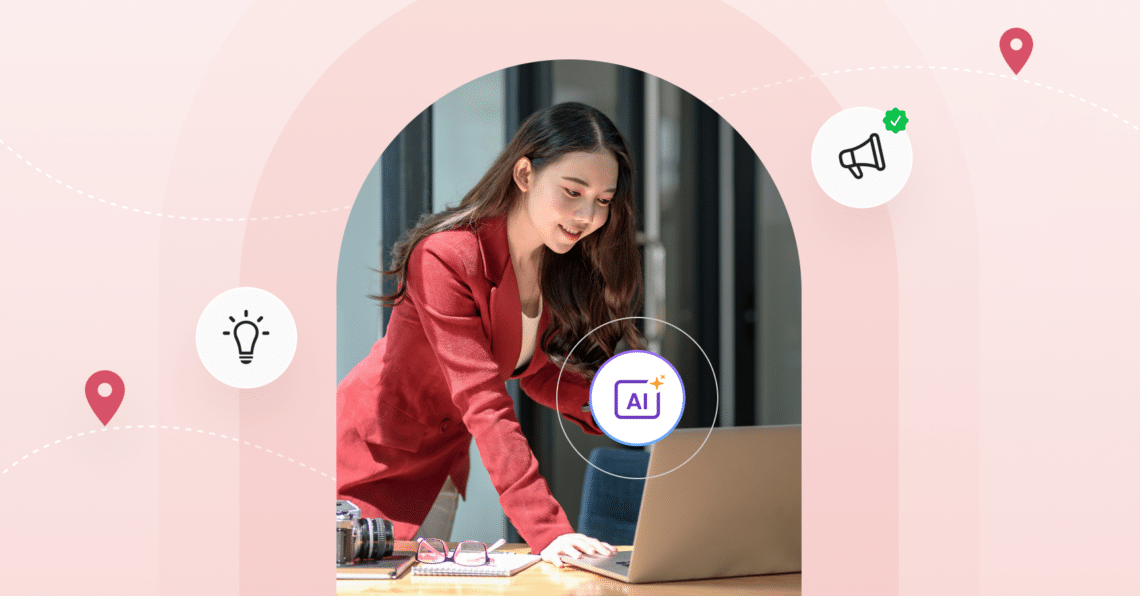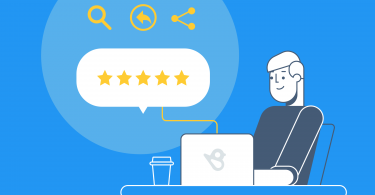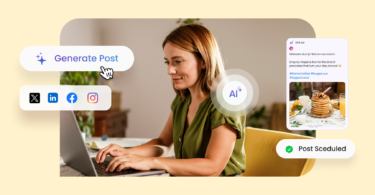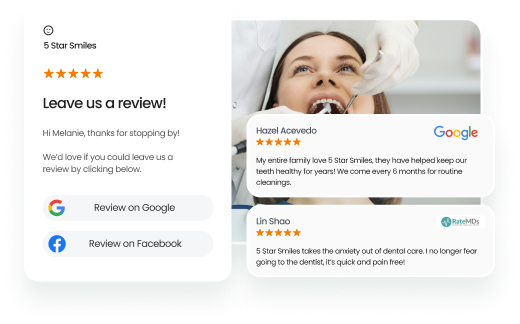AI digital marketing has become the default label for everything from chatbots to automated ads, content generators, and more. But ask most marketing professionals what it actually solves, and the answers are usually vague.
While most companies now invest in artificial intelligence, machine learning, or generative AI, few understand how to apply these technologies meaningfully.
Whether it's content creation, social media management, or data analysis, the value of AI lies in using it to enhance campaign performance, align with customer preferences, and help teams focus on what matters most.
If you’re still manually testing high-performing subject lines, guessing what your target audience wants, or managing five dashboards just to track one campaign, your digital strategy needs a reset.
In this blog, you’ll learn how AI digital marketing helps teams streamline workflows and what leading brands and multi-location businesses are doing to make it work at scale.
💡The AI reality check
AI tools don’t replace strategy. They reveal it. The best marketing teams don’t just use AI to generate content or automate tasks.
They use it to better understand their audience, simplify repetitive tasks, and make smarter decisions that previously relied on gut instinct.Table of contents
- What is AI digital marketing?
- What can AI in digital marketing actually do today?
- How are leading brands using AI to transform digital marketing?
- What do most marketers get wrong about AI digital marketing?
- FAQs on AI digital marketing
- Use Birdeye to scale your AI digital marketing strategy with clarity and control
What is AI digital marketing?
AI digital marketing refers to the use of artificial intelligence technologies such as machine learning, natural language processing, and predictive analytics to automate, optimize, and personalize marketing efforts across digital channels.
What makes AI marketing different from traditional tools?
Traditional marketing tools rely on manual input, predefined rules, and static data. You set the rules, feed in the content, and then wait to see what happens.
AI tools flip that model and adapt in real time. They don’t just follow instructions. They learn from patterns, test multiple outcomes, and recommend the next best step, often before a human would have even seen the trend. In fact, as per Twilio Segment’s The State of Personalization 2023, more than 9 in 10 businesses (92%) are using AI-driven personalization to drive growth in their business.
Here’s how it’s different:
- AI gets smarter with use. Unlike traditional tools that run on fixed inputs, AI, powered by machine learning, continuously improves by analyzing performance, customer behavior, and outcomes.
- It understands language and sentiment. While traditional tools offer static dashboards, AI, with natural language processing, can read reviews, messages, and social posts to detect mood, intent, and emerging topics.
- It connects the dots. Traditional tools often provide siloed metrics. AI pulls from multiple data sources to deliver cross-channel insights, revealing a more complete picture.
- It’s proactive. Instead of waiting for a human to notice a dip in ad performance, AI can automatically pause campaigns, suggest new content, or shift the budget, often before a trend fully develops.
Why it matters now:
- Customers expect relevant, fast, and personalized interactions
- Teams are juggling more channels with fewer resources
- Tools are easy to access, but strategy is still the missing piece
Quick check: Is your team still:
- Guessing what your target audience wants?
- Running social media campaigns manually?
- Spending hours reviewing dashboards instead of optimizing them?
If yes, your digital strategy is due for an upgrade.
What marketers know:
AI tools aren’t just about speed; they improve how marketing teams think. They help uncover insights, align messaging, and make smarter decisions that move results.
Let’s break down the key things AI can actually do for marketers and where the gains are happening right now.
What can AI in digital marketing actually do today?
AI is no longer an experiment—it’s embedded in how the best marketing teams build, launch, and optimize campaigns. But success doesn’t come from adding more tools. It’s about knowing where AI can drive real impact across your marketing strategy.
Here’s where top-performing teams are using AI today:
1. Generate content faster without compromising quality
For most marketing teams, content is still the bottleneck. Whether it’s drafting the 50th social caption of the week or localizing a national campaign across dozens of regions, creating content at scale that still feels human is an ongoing struggle. AI doesn’t eliminate creativity; it removes the friction that slows it down.
What makes this shift possible is how far content generation tools have come. With the right AI, you don’t need to copy-paste templates or manually tweak posts for each location. Instead, your team can generate original, brand-safe content in seconds, guided by data analytics and aligned with your brand voice.
This is where Birdeye Social AI comes in. It helps marketing teams:
- Publish high-quality social media posts across locations
- Adjust messaging for different audiences without rewriting from scratch
- Get relevant royalty-free images and hashtags
The result? Less time spent creating and more time spent engaging with your audience.
2. Personalize messaging for every customer journey
One-size-fits-all messaging doesn’t work anymore. Customers expect content, offers, and experiences tailored to their needs, behaviors, and timing. But doing that manually across channels and locations? Impossible.
AI simplifies personalization by analyzing patterns in customer behavior, reviews, and preferences, and then translating them into timely and relevant actions.
Birdeye Messaging AI helps teams put those insights into action. From a unified inbox, teams can:
- Automatically personalize and send messages across text, webchat, email, and social media
- Use AI-generated summaries to understand context quickly and reply faster
- Automate trigger-based messaging flows to match every stage of the customer journey
Mastering AI Digital Marketing: Tools, Tactics, and Trends
Want to see the impact of Birdeye on your business? Watch the Free Demo Now.
3. Predict outcomes and optimize campaigns
Traditional marketing campaigns rely on post-mortem reports and manual adjustments. However, AI empowers you to course-correct while the campaign is live.
Modern AI technology monitors performance signals across platforms and uses data analytics to spot what’s working and flags potential issues, before your team does.
With Birdeye Insights AI, marketing teams can:
- Detect sentiment shifts from customer feedback in real time
- Identify underperforming locations, ads, or landing pages
- Use natural language processing to analyze tone, brand voice, emotion, and themes
4. Segment audiences dynamically at scale
Traditional segmentation meant uploading a spreadsheet and hoping for the best. However, in the age of AI-driven digital marketing, marketers need real-time, evolving audience insights that reflect actual customer behavior.
That’s where Birdeye Competitors AI comes in. It doesn’t just show who your competitors are; it helps you generate dynamic audience insights by analyzing customer sentiment, reviews, and marketing campaigns across the industry.
With Competitors AI, marketing teams can:
- Identify regional patterns and industry trends in customer behavior
- Compare audience feedback across locations and competitors
- Discover what topics, keywords, and review themes are resonating and where gaps exist
5. Monitor brand sentiment and reputation in real time
When a location’s ratings dip or a customer review goes viral, you can’t afford to find out days later. In today’s digital marketing environment, real-time visibility into your brand health is non-negotiable.
Birdeye Reviews AI and Listings AI work together to give you that clarity. They don’t just collect reviews or sync listings, they use natural language processing and machine learning to spot risks, uncover insights, and keep your customer experience consistent.
With these GenAI tools, you can:
- Track sentiment trends across review platforms instantly
- Benchmark review volume and quality against competitors
- Monitor listing accuracy and resolve data mismatches that affect local visibility
- Flag fake reviews and get notified the moment your reputation changes
AI isn’t just helping marketers respond faster; it’s making reputation a real-time marketing lever, not a repetitive task.
How are leading brands using AI to transform digital marketing?
Most top brands aren’t just testing AI for digital marketing, but they’re redesigning their entire approach around it. From hyper-personalized email campaigns to dynamic content optimization, AI is no longer a nice-to-have; it’s a must-have. It’s the foundation of scalable, efficient, and intelligent marketing.
What sets these brands apart isn’t just the tools they use; it’s how they use AI to turn data into decisions, insights into action, and scale into customer engagement.
Here’s what this looks like in action:
1. Exclusive Furniture: Turning reviews into revenue
Exclusive Furniture, a regional retail chain, used to treat online reviews as an afterthought. But once they started using Birdeye Reviews AI, they began mining their customer feedback for actual strategy.
By using artificial intelligence to analyze sentiment in thousands of reviews, the team identified what truly drives satisfaction and pinpointed where service gaps are. They then used these insights to tailor digital advertising copy, optimize store experiences, and guide product training.
Results:
- 4X growth in Google reviews
- Major uplift in store-level visibility on search engines
- Unified brand experience across locations
This wasn’t just review management. It was AI-powered digital marketing rooted in the voice of the customer.
2. Hughston Clinic: Scaling personalized communication across locations
For a multi-location healthcare system like Hughston Clinic, consistency and speed are critical, but traditional methods couldn’t keep up.
By using Birdeye Messaging AI, Hughston streamlined patient communications with automated, brand-safe messages that matched tone, topic, and timing. Whether it was appointment reminders, follow-ups, or reputation recovery, AI made every interaction feel personalized, without adding overhead.
Results:
- 4X increase in review volume
- 40% reduction in staff time spent on manual outreach
- Improved customer experience and appointment show rates
These examples demonstrate how companies are moving beyond automation and toward a deeper understanding of what customers want, need, and expect even before they ask.
What these brands prove is this: AI is not replacing human creativity. And now, any marketing team, no matter the size, can access the same strategic advantages with Birdeye’s GenAI platform.
How do Birdeye tools help you scale AI for digital marketing across locations?
Most multi-location businesses face the same problem: fragmented tech, inconsistent branding, and overburdened teams. Scaling digital efforts usually means hiring more people or sacrificing quality. Birdeye’s GenAI tools solve this by letting you automate the hard stuff, without losing the human touch.
Instead of cobbling together tools for content creation, review response, listings, and messaging, Birdeye gives you a unified platform purpose-built for AI in digital marketing. Here’s how it supports each part of the journey:
1. Reviews AI: Convert customer feedback into real-time marketing insights
- Analyze reviews across locations using natural language processing
- Uncover what customers actually care about, down to product, region, or service line
- Auto-generate timely, on-brand responses to improve customer experience
2. Listings AI: Improve local visibility and search accuracy
- Audit and update business data across 150+ platforms, instantly
- Fix inconsistencies that hurt performance on search engines
- Enrich listings with photos, hours, FAQs, and keywords that improve rankings
3. Messaging AI: Personalize outreach without increasing workload
- Manage all channels—text, email, chat, social—in one inbox
- Use AI summaries to speed up replies while staying personal
- Automate journeys like review requests, follow-ups, or missed call responses
4. Social AI: Create brand-consistent content across locations
- Generate tailored social media posts based on audience, location, and trends
- Pull from your top-performing content, competitor activity, or industry events
- Schedule and publish with AI-optimized timing to boost reach and relevance
5. Competitors AI: Benchmark performance and find hidden opportunities
- Monitor competitor reviews, listings, and marketing campaigns
- See what topics resonate, what’s trending, and where you can stand out
- Get side-by-side comparisons of Birdeye Score, ratings, and volume
6. Insights AI + Survey AI: Close the loop with deeper intelligence
- Pull in new data analytics from reviews, surveys, and location performance
- Track trends and alert your team when something needs action
- Measure how your marketing strategies impact loyalty and satisfaction
Together, these tools help marketing teams do what used to require five platforms, three teams, and endless hours. With AI for digital marketing, you don’t just increase efficiency, you increase impact.
That said, having powerful tools is only part of the equation. While many brands now explore AI digital marketing, few apply it in ways that actually drive results. Misuse, misunderstanding, and misplaced expectations often stall progress.
Before you scale your AI efforts further, it’s worth double-checking whether your approach is setting you up for success or simply automating bad habits.
What do most marketers get wrong about AI digital marketing?
Despite the hype around AI in digital marketing, many marketers are still using it in surface-level ways. When misused, AI can amplify the wrong messages, deliver bland content, or disconnect you from your audience altogether.
Here are the most common errors marketers need to avoid:
1. Treating AI as a replacement for human creativity
AI isn’t meant to replace human writers or creative judgment. It’s a tool to speed up ideation and simplify repetitive tasks, not to do your job for you.
❌ What goes wrong: Overreliance on prompts = generic output
✅ Smarter approach: Use AI for first drafts, A/B testing, or summarizing feedback—then refine with your insights
2. Creating more content without a better strategy
Just because AI can generate thousands of posts doesn’t mean you should. Content volume only works if it’s tied to a clear audience intent, format, and goal.
❌ What goes wrong: Quantity over quality = lower engagement and wasted effort
✅ Smarter approach: Align AI content with actual customer data, feedback trends, or competitor gaps to keep it focused
3. Ignoring personalization at scale
Generic automation is not personalization. If your AI is just blasting the same message to everyone, you’re not using it right.
❌ What goes wrong: Blanket messaging = ignored emails and unsubscribes
✅ Smarter approach: Use data analytics and natural language processing to segment users, personalize touchpoints, and refine offers
4. Thinking of AI as a “set it and forget it” solution
AI evolves, but so do your customers. What worked in Q1 might flop in Q3. Treating AI tools as static can quickly make your strategy outdated.
❌ What goes wrong: Poor performance from outdated automations
✅ Smarter approach: Monitor performance, experiment, and adapt continuously using AI’s ability to surface new data
5. Not training the tools on your brand voice or customer context
Without customization, your AI might sound like everyone else. Generic tools trained on the internet can’t automatically speak your brand’s language.
❌ What goes wrong: Off-brand content, tone mismatches
✅ Smarter approach: Platforms like Birdeye Social AI and Messaging AI let you set guardrails around tone, terminology, and compliance needs
By avoiding these missteps, you unlock the real benefit of AI and digital marketing: faster execution, smarter targeting, and messaging that actually connects.
FAQs on AI digital marketing
AI digital marketing uses deep learning and natural language processing to adapt content, optimize web pages, and improve decisions in real time. Traditional automation operates on fixed, predefined rules and inputs.
AI enhances capabilities; it doesn’t replace them. While it speeds up content marketing tasks like drafting, testing, or tagging posts, the real value comes from combining AI with human storytelling, emotion, and judgment.
There are many benefits: faster content creation, data-driven personalization, campaign optimization, and improved customer insights. AI helps teams move from reactive to proactive, gaining a competitive edge in how they connect with customers.
Birdeye offers AI tools built for multi-location businesses—covering reviews, listings, messaging, and social media at scale.
Use Birdeye Social AI to generate on-brand posts, personalize by location, and auto-schedule content across all your pages.
Birdeye’s GenAI suite personalizes messaging, tracks customer sentiment, and delivers insights by location, audience, or campaign.
Use Birdeye to scale your AI digital marketing strategy with clarity and control
AI isn’t just transforming how marketers work; it’s redefining what modern marketing looks like. Leading brands aren’t experimenting with AI on the sidelines. They’re building entire strategies around it, from generating content to personalizing campaigns to responding to customer insights in real time.
Birdeye is the only AI company explicitly built for multi-location businesses. Its GenAI tools help marketing teams:
- Respond to reviews with relevance and speed
- Create consistent, brand-aligned content across all locations
- Track competitor moves, customer sentiment, and performance trends
- Keep listings accurate and engaging for local search dominance
Birdeye provides the foundation to scale AI for digital marketing without compromising your brand’s voice, control, or context.

Originally published









